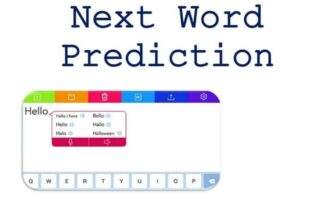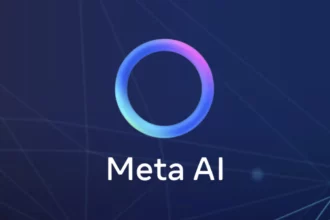NLP vs LLM: Understanding the Core Differences
Oh, the world of language technologies! It’s like comparing a master chef who cooks up words with a word wizard who whips up entire conversations out of thin air. Now, let’s dive into the realm of NLP and LLM to uncover their unique flavors and specialties.
Alright, buckle up language enthusiasts! Today, we’re dissecting the heart of NLP versus LLM technologies. So, what exactly sets these two powerhouses apart? Let’s find out together.
Let’s break it down step by step:
Nibbling on NLP (Natural Language Processing)
Imagine NLP as your trusty sidekick in deciphering and engaging with human language in all its glory. From fixing typos to chatty chatbots, NLP is the bridge between machines and our human chatterbox selves.
Saviez-vous – In NLP land, parsing is like slicing your sentence into bite-sized grammar bits for machines to digest easily. This helps them identify nouns, verbs, and all that jazz.
Chewing on LLM (Large Language Models)
Now shift your gears to LLMs – the cool kids trained on a feast of text data, serving up text that might just fool you into thinking it’s human-made. But hey, their strength lies in generating texts rather than analyzing them like NLP does.
Think of LLMs as text-generation virtuosos tuned to spin yarns that might make even Shakespeare raise an impressed eyebrow.
Now isn’t it fascinating how these tech marvels dance around language in their own unique ways?
So here’s a question for you: If you had to choose between having an NLP assistant or an LLM storyteller by your side for a day, which would you pick and why?
Curious much? Keep reading ahead as we unravel more exciting insights about these linguistic juggernauts!
Table of Contents
TogglePractical Applications of NLP and LLM Technologies
When it comes to practical applications, NLP and LLM technologies have their unique strengths and flavors that cater to different needs like chefs crafting specialized dishes. Let’s take a peek at how these tech marvels shine in the real world.
Unveiling Practical NLP Applications Tackling tasks like sentiment analysis, risk evaluation, or enhancing customer service is where NLP struts its stuff. Picture this – NLP swooping in like a linguistic superhero to decode financial jargon with its trusty generative AI sidekick by its side.
- Sentiment Analysis: Think of NLP as your loyal emotions interpreter, sifting through texts to gauge feelings from customers’ comments or reviews.
- Risk Assessment: It’s like having a smart financial advisor on standby, using NLP’s prowess to assess risks based on nuanced language cues.
- Customer Service Enhancement: Ever chatted with those chirpy chatbots? Yup, that’s NLP sprinkling its magic dust for seamless interactions.
Let’s Spice Things Up with LLM Applications Now, shift gears as we dive into the realm of LLM, where crafting financial reports, crunching market analyses data, and jazzing up customer service interactions are all in a day’s work. – Financial Reports: Picture LLM like your data-savvy accountant cranking out detailed reports filled with insights and trends. – Market Analyses: It’s akin to having an expert analyst at your beck and call studying market patterns and fluctuations for you. – Automated Customer Interactions: Imagine an automated customer service agent well-versed in human-like conversations thanks to LLM’s text generation finesse.
So here’s a fun scenario for you: If you had an NLP buddy helping you navigate through complex financial documents and an LLM pal creating snazzy reports for your next business meeting, how would this dream duo revolutionize your workday?
Navigating the Differences between NLP Models In the world of NLP models,”rule-based” relies on predefined rules and dictionaries while “statistical” models flex their muscles with probabilistic methods. One thrives on structured frameworks while the other dances dynamically using data-driven approaches.
When it comes to applications of NLP — emails filters making your inbox clutter-free to predictive text whipping up suggestions before you even think them — the possibilities are endless! From smart assistants streamlining tasks to language translation breaking down barriers, NLP weaves its magic across various domains.
And did you know that while Neuro-Linguistic Programming (NLP) delves into personal development realms like phobias and anxiety management, Natural Language Processing (NLP) lends a helping hand in communication skills? It’s like having two tech-savvy besties—one coaching self-improvement while the other perfecting human-machine rapport!
So languishing over these fascinating technological marvels makes one wonder: which application of NLP intrigues you the most—are you all about eloquent email filters or hooked on voice-controlled digital phone calls?
Stay tuned as we unravel more exciting insights into these linguistic juggernauts!
Comparing NLP and LLM: Strengths and Limitations
When it comes to NLP (Natural Language Processing) and LLM (Large Language Models), each technology brings its own strengths and limitations to the table. Let’s peel back the layers of these linguistic marvels to uncover their unique qualities further.
Advantages and Disadvantages of NLP: NLP boasts high accuracy and reliability within specialized domains, making it a powerhouse in tasks like sentiment analysis or customer service enhancement. However, NLP may stumble when faced with challenges requiring a deep understanding of context. One key concern with NLP is the potential for bias in training data, leading to inaccurate or unfair results—a bit like seasoning gone wrong in a dish that was supposed to impress!
Strengths and Limitations of LLM: On the flip side, LLM shines in producing coherent language output thanks to its vast knowledge base. Picture LLM as the fancy chef concocting beautifully crafted dishes. However, just like adding too much spice can ruin a recipe, LLM may generate inaccurate or biased content influenced by its training data.
Now, let’s address these powerhouses head-on in a battle of strengths:
In one corner: NLP flaunts its accuracy crown but might stumble over context complexity. In the other corner: LLM wows with coherent language production while battling biased influence from its training data.
How They Tackle Challenges: Imagine them as linguistically savvy superheroes—NLP swooping in with precise precision like a seasoned detective looking for clues while LLM spins tales akin to fantasy wizards conjuring intriguing stories from their magical library.
A crucial point to note is that both technologies have hurdles to overcome – NLP might grapple with ambiguity and context intricacies while LLM juggles between delivering impeccable text-generation feats without tripping over biases ingrained during training.
So here’s a thought experiment for you: If you had an NLP assistant unraveling intricate texts and an LLM storyteller spinning engaging tales at your beck and call, how would this dynamic duo transform your workday adventures? Imagine juggling between factual analyses by NLP and creative outputs by LLM—sounds like a blend of Sherlock Holmes’ deduction skills intertwined with J.K. Rowling’s storytelling magic!
Considering their unique flavors, which one would you lean towards—relying on NLP’s precise touch or letting LLM sprinkle its captivating language enchantments? Share your thoughts on how you’d harness these technological wonders in your daily ventures!
Is LLM Part of NLP? Unpacking Their Relationship
The ever-enticing world of NLP vs LLM technologies! Let’s unravel the mystery surrounding their relationship and whether LLM is indeed a part of the NLP family. Picture this scenario as a linguistic tango where NLP leads with its analytical prowess, while LLM adds a dash of magic with its vast language generation capabilities.
Deciphering Their Relationship
When it comes to NLP (Natural Language Processing) and LLM (Large Language Models), you can think of them as two distinctive siblings in the vast technological family. While both share a common interest in decoding and generating human language, they do possess their unique traits that set them apart. It’s like comparing a detective who thrives on analyzing clues to a master storyteller weaving intricate tales.
NLP – The Marvelous Linguistic Detective
NLP, like our sharp detective, is all about understanding, analyzing, and manipulating human language using algorithms as its trusty magnifying glass. From deciphering text relationships to tagging parts-of-speech or recognizing named entities, NLP dives deep into the textual intricacies with finesse.
LLM – The Spellbinding Storyteller
On the other hand, LLM steps onto the stage as the captivating storyteller among siblings. Trained on vast amounts of text data like an apprentice soaking up knowledge from ancient scrolls, LLM excels in spinning cohesive narratives that might just mesmerize even the most discerning audience.
Now to answer the burning question: Is LLM part of NLP? Well, think of it this way – while both NLP and LLM fall under the umbrella of language technologies aiming to understand and generate human language, they operate in slightly different realms. If we were to compare them to spices in a recipe book, NLP would be your reliable salt for enhancing flavor while LLM adds that special touch of exotic saffron for an unforgettable dish.
Exploring Their Bond
While NLP can be seen as the foundational framework where techniques like sentiment analysis or discourse parsing thrive, LLM emerges as the innovative extension pushing boundaries in text generation tasks. They complement each other in exploring various facets of language processing akin to partners in crime solving – one cracking codes while the other narrates gripping tales.
So here’s a ponderous musing for you: In this dynamic duo expedition where NLP plays detective unraveling linguistic puzzles and LLM enchants with captivating narratives from afar—how would you envision leveraging their combined strengths for your own linguistic adventures?
Let your imagination run wild as we venture further into these enchanting worlds of NLP and LLM technologies!
- NLP (Natural Language Processing) focuses on deciphering and engaging with human language, acting as a bridge between machines and human communication.
- LLMs (Large Language Models) are trained on vast amounts of text data to generate human-like text rather than analyzing it like NLP does.
- Practical applications of NLP include tasks like sentiment analysis, risk evaluation, and enhancing customer service.
- NLP is like a trusty sidekick for understanding language nuances, while LLMs are the cool kids trained to generate impressive text.




